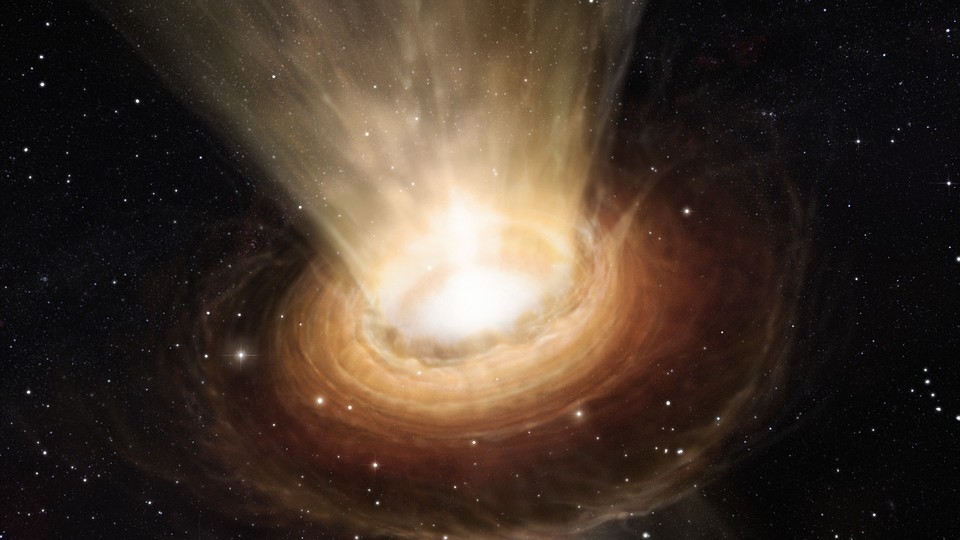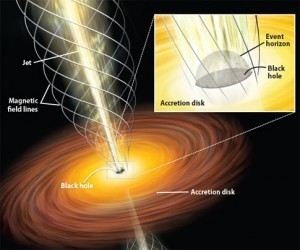Observationally we know that black holes come in two sizes: stellar mass black holes with a mass of 5 – 10 Suns, and supermassive black holes with a mass of millions or billions of Suns. What we haven’t seen are medium sized black holes with masses of hundreds to thousands of Suns. We’ve long suspected they should exist, but proving it has been difficult. Now there’s strong evidence that these medium-sized black holes actually exist.
Medium sized black holes (usually called intermediate mass black holes, or IMBHs) are difficult to observe precisely because of their size. Stellar-mass black holes can be found by their behavior around a binary companion, such as seen in microquasars. Supermassive black holes can be observed through the tremendous energy they produce when active (such as quasars) or through stars orbiting them closely, such as seen in the center of our galaxy. Intermediate mass black holes aren’t as energetic as their supermassive siblings, and they would tend to be found in dense star clusters rather than a simple binary system like stellar mass black holes.
Still, the best chance of observing IMBHs is when they are active, so in this latest work the team focused on what are known as ultra-luminous x-ray sources. These bright sources of x-rays are often caused by stellar mass black holes, but could be caused by intermediate mass black holes as well. What’s interesting about ultra-luminous x-ray sources (ULXs) is that they can vary in brightness, and the rate at which they vary is related to the size of the object producing them. In an earlier work, the team found that different fluctuations in ULXs can vary in a ratio of 3 to 2. The frequencies of these 3:2 ratios correlate to the size of the stellar mass black hole, where the larger the black hole the lower the frequencies. When they observed an ultra-luminous x-ray source known as NGC1313X-1, they found a 3:2 ratio in the brightness fluctuations, but at a much lower rate. If it’s caused by a similar process as that seen in stellar mass black holes, then the source of NGC1313X-1 is a black hole with a mass of about 5,000 solar masses.
So it looks like black holes really do come in small, medium and large.












Comments
what/is/the/latest/on/primordial/black/holes,and/their/role/as/a/dark/matter/canidate?